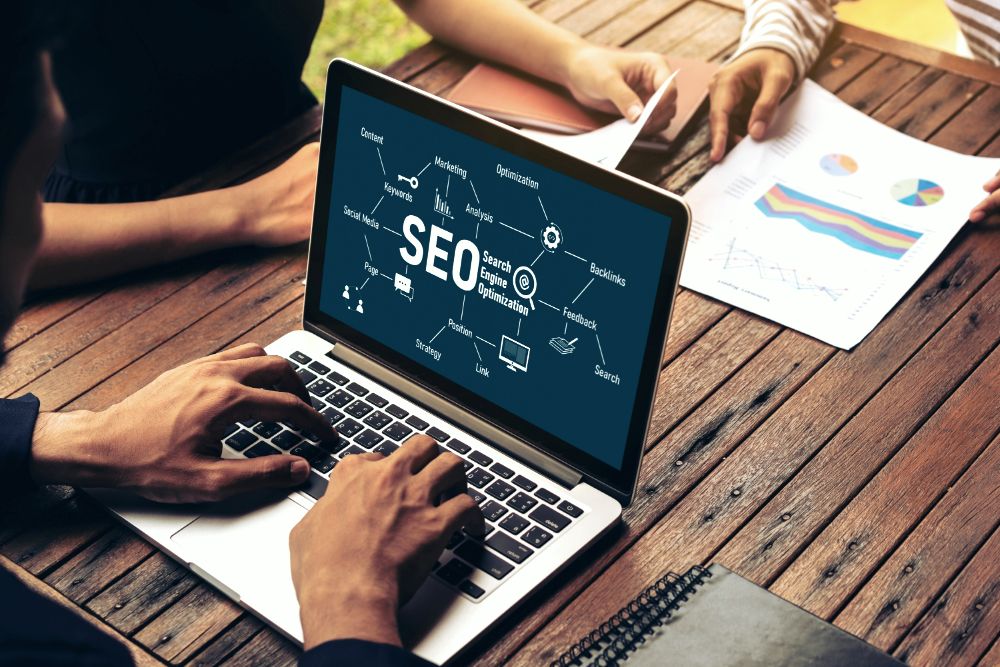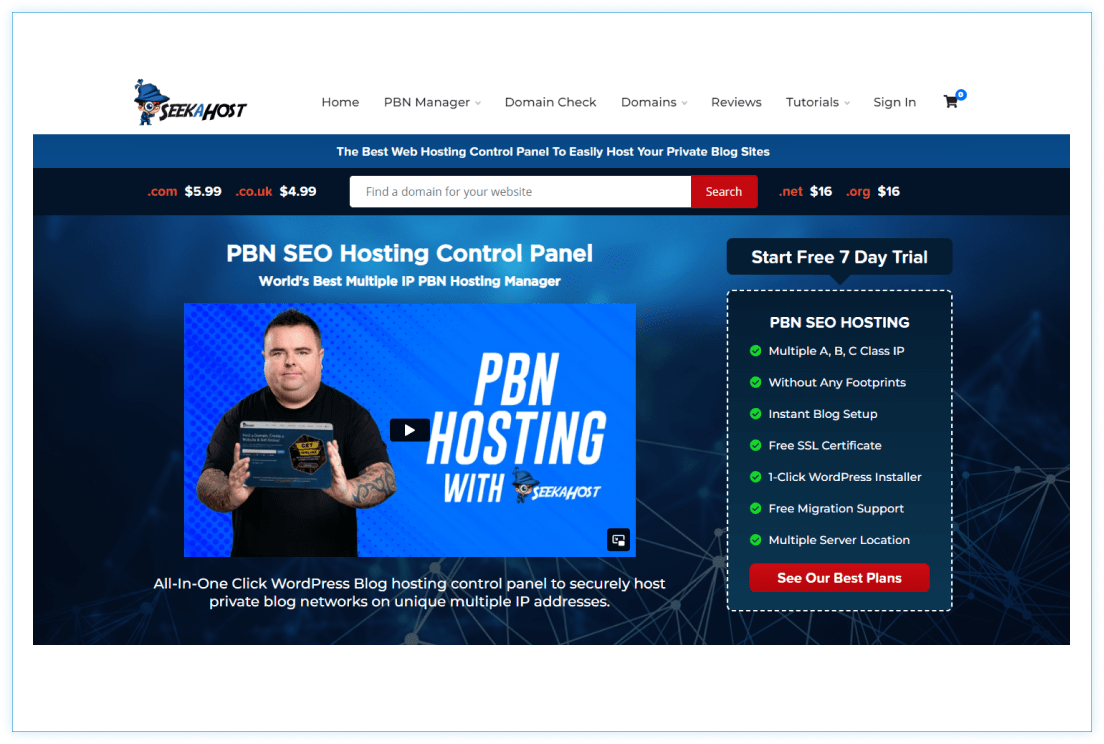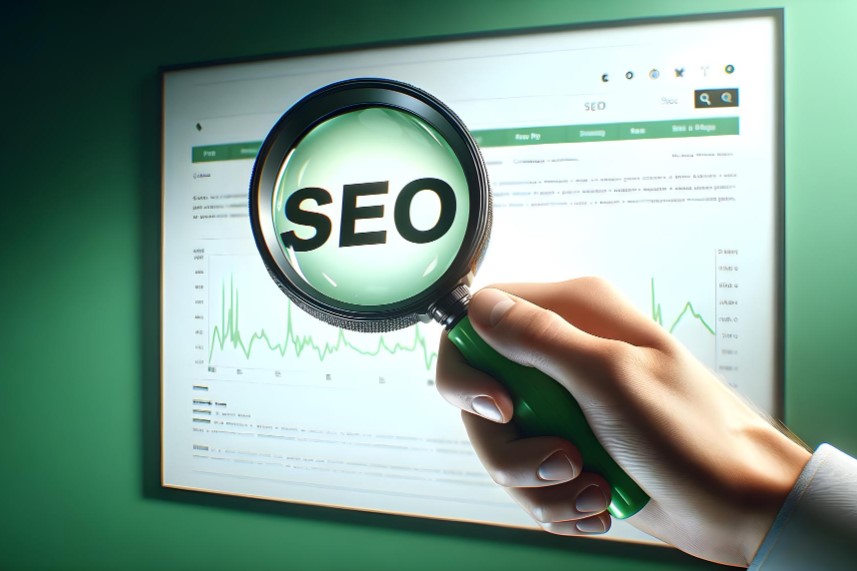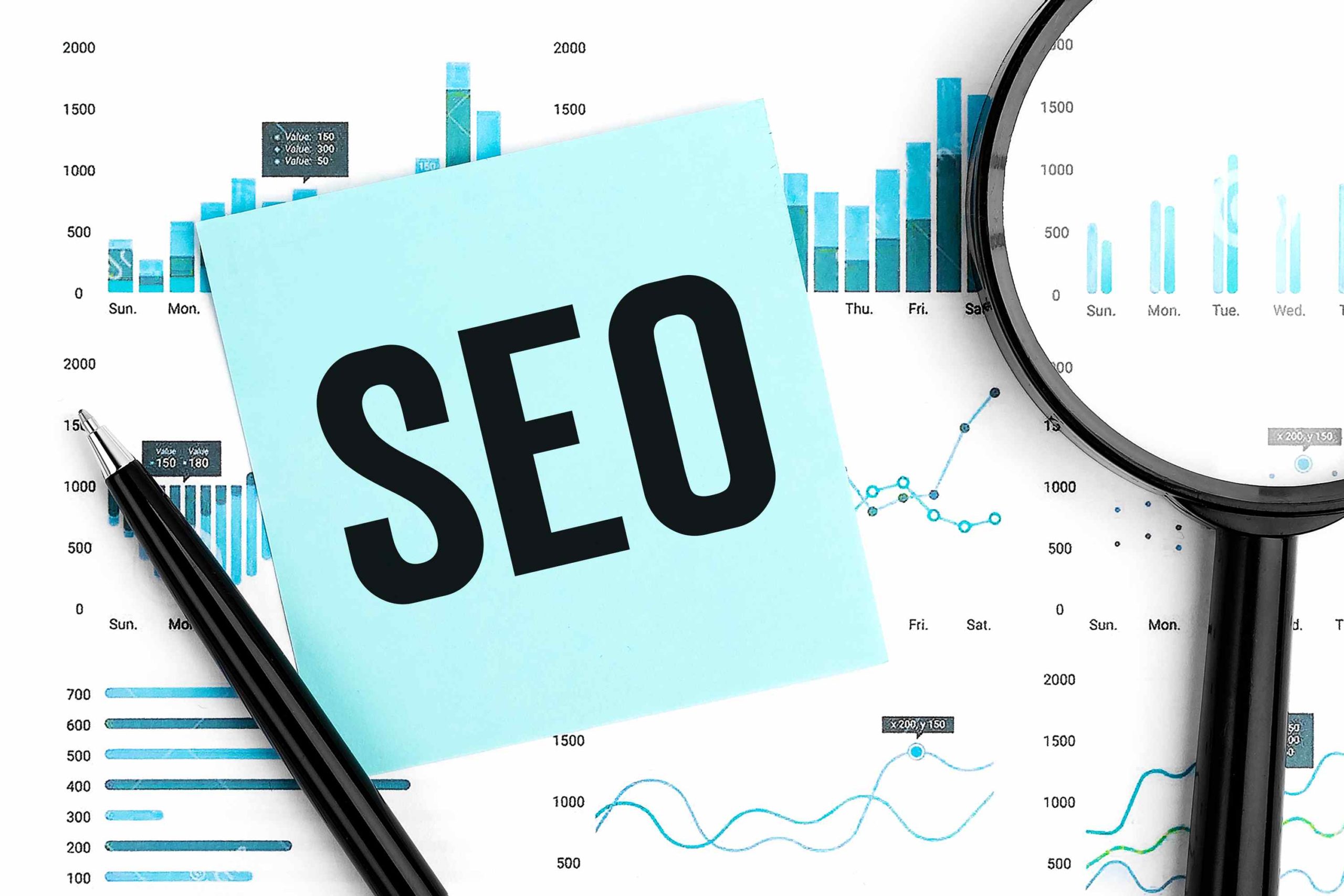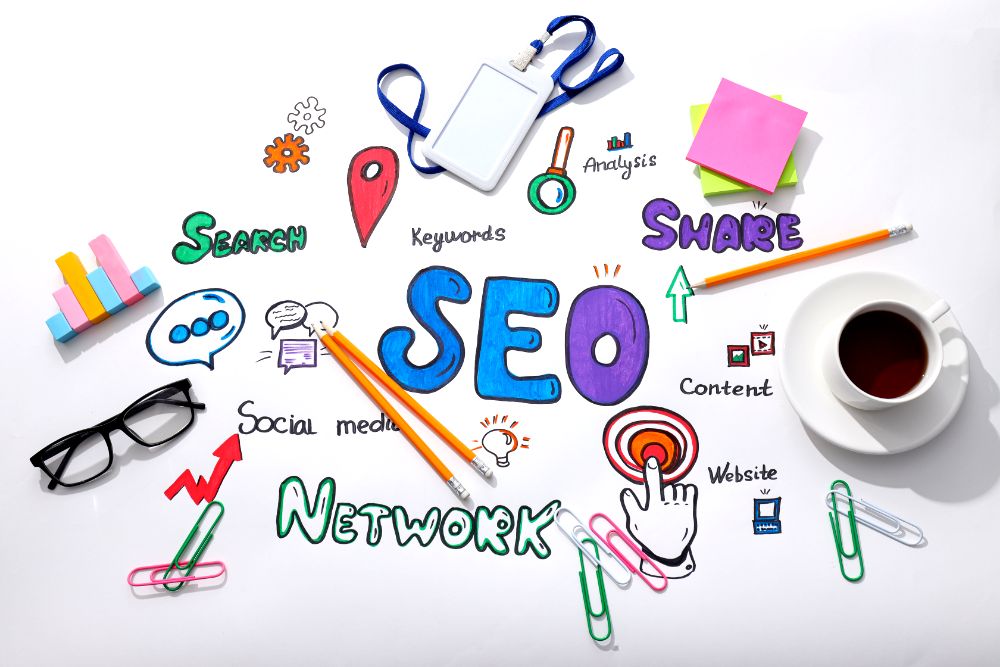
In today’s world, the Internet has become the go-to source for information, products, and services. With millions of websites competing for attention, how do you ensure that your site stands out and reaches your target audience? The answer lies in SEO.
When you created your website, you aimed to make it accessible and engaging for your visitors, ensuring they could easily find the information or products they need. But attracting visitors isn’t just about having great content; it’s also about making sure people can actually find your site. This is where SEO, or search engine optimization, comes into play. SEO is the practice of optimizing your website to make it easier for search engines like Google to understand and rank your content.
By mastering SEO, you not only improve your site’s visibility in search results but also attract more visitors who are actively searching for what you offer. Understanding and implementing SEO can be the difference between a website that gets lost in the digital crowd and one that consistently draws in traffic and achieves its goals.
As SEO Experts with lots of years in the field, we have a lot to share.
In this article, we’ll walk you through the essentials of SEO, breaking down what it is, why it matters, and how it can transform your online presence. We’ll give you practical tips and strategies you can use to optimize your website, from understanding the importance of keywords to mastering on-page and off-page techniques. You’ll also learn about the key elements of technical SEO that ensure your site runs smoothly and ranks well.
Whether you’re new to SEO or looking to refine your existing strategy, this guide will provide you with the knowledge and tools you need to boost your site’s visibility and attract more visitors.
Key Takeaways
- SEO (Search Engine Optimization) is the process of improving a website’s visibility and ranking in search engine results pages (SERPs) to increase the quality and quantity of organic traffic to the site.
- SEO helps build credibility and trust with your audience because websites that rank highly are perceived as more authoritative and trustworthy.
- SEO and SEM (Search Engine Marketing) are strategies aimed at increasing a website’s visibility and traffic, but SEO focuses on organic growth through techniques, whereas SEM includes both organic and paid strategies to achieve these goals.
- SEO and PPC (Pay-Per-Click) are strategies aimed at driving website traffic, but SEO builds long-term growth organically, while PPC offers immediate visibility through paid advertising.
- SEO involves optimizing the website for a better user experience, including faster loading times and mobile-friendliness.
- SEO is constantly evolving, and staying updated with SEO best practices helps businesses adapt to changes in search engine algorithms, ensuring continued visibility and relevance.
What is SEO?
Search Engine Optimization (SEO) is the process of enhancing a website’s visibility and ranking in search engine results pages (SERPs) to increase the quality and quantity of organic (unpaid) traffic to the site. SEO involves various strategies and practices aimed at improving a website’s position in search results, which can lead to more visitors and potential customers.
How do Search Engines Work?
In order to understand SEO, it’s important to learn how search engines work.
Search engines operate through a series of processes that include crawling, indexing, and ranking to deliver relevant search results to users.
Crawling
Crawling is the first step in how search engines work. It involves the use of web crawlers, also known as bots or spiders, to scour the Internet for new and updated content. These crawlers follow links from known pages to discover additional pages and content, which can include text, images, videos, and more. The crawlers systematically browse the web, gathering data from billions of pages to feed into the search engine’s index.
Indexing
Once content is discovered through crawling, the next step is indexing. During this process, the search engine analyzes and stores the content in a structured database called the index. The index contains key information about each page, such as keywords, the type of content, and how recently it was updated. This information helps the search engine understand the content and context of each page, making it easier to retrieve relevant results when a user performs a search.
Ranking
The final step is ranking, where the search engine uses algorithms to determine the order of search results based on relevance to the user’s query. These algorithms consider numerous factors, including the content’s quality, relevance, authority, and user engagement metrics. The goal is to present the most relevant and high-quality results at the top of the search engine results pages (SERPs). The ranking process is dynamic and can vary between different search engines, such as Google and Bing, due to their unique algorithms.
Overall, search engines function like digital librarians, organizing and retrieving vast amounts of information to provide users with the best possible answers to their queries.
Why is SEO important?
SEO is essential for any website because it directly affects online visibility and traffic. Most users only look at the first page of search engine results, making it essential for your website to rank as high as possible. High visibility in search results increases the likelihood that users will click on your link, leading to more organic traffic to your site. This, in turn, can lead to more leads, conversions, and, ultimately, higher revenue.
Moreover, SEO helps build credibility and trust with your audience. Websites that rank highly are often perceived as more authoritative and trustworthy. When your website appears at the top of the search results, it signals to users that your site is a reliable source of information. Additionally, effective SEO practices can enhance the user experience by making your site easier to navigate, faster, and more mobile-friendly, all of which contribute to better search rankings.
What are the Main Goals of SEO?
As we already explained that the main goals of SEO are centered around improving a website’s visibility and performance in search engine results, which ultimately contributes to business growth.
Here are some of the primary goals of SEO:
- Increase Organic Traffic: One of the most common goals of SEO is to boost the number of visitors coming to a website through organic search results. This involves optimizing content and keywords to improve search engine rankings, thus attracting more potential customers.
- Improve Search Engine Rankings: Achieving higher rankings in search engine results pages (SERPs) is crucial for visibility. SEO aims to position a website for relevant search queries, which can lead to increased traffic and brand recognition.
- Enhance User Experience: SEO also focuses on improving the overall user experience on a website. This includes optimizing site speed, mobile-friendliness, and navigation, which can lead to lower bounce rates and higher engagement. Learn more here: https://quirk.biz/how-user-experience-affects-seo/
- Generate Leads and Conversions: By attracting the right audience, SEO helps convert website visitors into leads or customers. This involves targeting keywords that align with user intent and optimizing landing pages to encourage conversions. For more about keywords, read our article What Are Keywords for SEO.
- Build Brand Awareness: SEO helps increase brand visibility and awareness by ensuring that a business appears in search results for relevant queries. This can lead to greater recognition and trust among potential customers.
- Gain Competitive Advantage: Effective SEO strategies can help a business stand out from competitors by ranking higher in search results, which can attract more customers and market share. We have an article about how to beat your competitors at SEO – you should check it out.
These goals are often aligned with broader business objectives, such as increasing sales and revenue. They are typically measured using specific, measurable, achievable, relevant, and time-bound (SMART) criteria to ensure they contribute to the overall success of a business.
Difference Between SEO and SEM
SEO (Search Engine Optimization) and SEM (Search Engine Marketing) are both strategies aimed at increasing a website’s visibility and traffic, yet they differ fundamentally in their approaches and components.
In contrast to SEO, SEM is a broader term that includes both SEO and paid search strategies, such as PPC.
The paid component of SEM involves bidding on keywords to display ads on search engine results pages. This allows for immediate visibility and traffic, as ads can appear at the top of search results as soon as a campaign is launched.
SEM can be more costly than SEO due to the expenses associated with running paid ads, but it offers the advantage of quick results and precise targeting options.
One of the main distinctions between SEO and SEM is the timeline for results. SEO is a long-term investment that builds over time, while SEM can deliver immediate visibility and traffic through paid ads. Additionally, SEO is typically more suitable for businesses with limited budgets looking for sustainable growth, whereas SEM is often favored by companies with larger budgets seeking quick results and the ability to target specific audiences.
Key Differences Between SEO and SEM:
| Aspect | SEO (Search Engine Optimization) | SEM (Search Engine Marketing) |
|---|---|---|
| Definition | SEO focuses on optimizing a website to improve its organic search engine rankings. | SEM is a broader strategy that includes both SEO and paid search tactics, such as pay-per-click (PPC) advertising. |
| Cost | SEO is generally cost-effective as it targets unpaid, organic traffic. | SEM involves costs for paid advertising, such as PPC campaigns, and is typically more expensive. |
| Results Timeline | SEO is a long-term strategy that can take months to see significant results. | SEM can deliver immediate results as soon as paid ads are launched. |
| Traffic Source | SEO aims to increase organic traffic through improved search rankings. | SEM targets both organic and paid traffic by using SEO and paid ads. |
| Budget Suitability | SEO is suitable for businesses with lower budgets looking for sustainable growth. | SEM is more suitable for businesses with larger budgets that need quick visibility and traffic. |
| Control Over Results | SEO provides less control over when and how a website ranks, as it relies on search engine algorithms. | SEM offers more control over ad placements and targeting through paid campaigns. |
| CTR and Competition | SEO typically has a higher click-through rate (CTR) due to user trust in organic results, with less competition in organic search. | SEM can have a lower CTR as users may skip ads, and competition can be high in paid search. |
In summary, while both SEO and SEM aim to increase a website’s visibility and traffic, SEO focuses on organic growth through optimization techniques, whereas SEM includes both organic and paid strategies to achieve these goals. Businesses often use a combination of both to maximize their online presence and achieve their marketing objectives effectively.
Difference Between SEO and PPC
PPC (Pay-Per-Click) is a form of online advertising where advertisers pay a fee each time their ad is clicked. This model allows businesses to bid on keywords to have their ads appear at the top of search engine results pages. PPC offers immediate visibility and can drive traffic quickly, making it ideal for time-sensitive campaigns or when instant results are needed. However, it requires a financial investment, as costs are incurred for each click, and the traffic stops as soon as the advertising budget is exhausted.
PPC also allows for precise audience targeting based on demographics, location, and other factors, providing more control over who sees the ads. While both SEO and PPC aim to increase website traffic, they do so in different ways. SEO focuses on long-term growth through organic means, whereas PPC provides immediate results through paid advertising. Businesses often use a combination of both strategies to maximize their online presence, leveraging the strengths of each to achieve their marketing goals effectively.
Key Differences Between SEO and PPC:
In summary, SEO and PPC are both essential components of a comprehensive digital marketing strategy. While SEO focuses on long-term growth through organic search, PPC provides immediate visibility and traffic through paid advertisements. Businesses often use a combination of both to maximize their online presence and achieve their marketing goals effectively.
Factors That Influence SEO
Google, the go-to search engine, handles over 3.5 billion searches daily, so ranking higher on its search results can significantly boost your website’s traffic. To achieve this, it’s crucial to understand and focus on Google’s ranking factors, which evolve alongside its search algorithms to deliver the most relevant content and improve user experience.
Here are the key ranking factors you should prioritize:
- Page Speed: How fast your website loads is critical. A quicker load time can help your site rank higher. Regularly monitor your site’s performance using tools like Google’s PageSpeed Insights and Pingdom Speed Test to ensure optimal speed.
- Mobile-Friendliness: With the rise of mobile browsing, a responsive design is essential. Websites that adjust seamlessly to different screen sizes are more likely to rank higher in search results. Test your site’s mobile usability with Google’s Mobile-Friendly Test.
- High-Quality Content: Content is king when it comes to SEO. Google favors content that is relevant, informative, and well-structured. Focus on creating unique, original content that answers specific queries and naturally incorporates relevant keywords to improve visibility.
- Backlinks: Also known as inbound links, backlinks from reputable sites signal to Google that your website is a trusted source. The more high-quality backlinks you have, the better your chances of ranking higher on search engine results pages.
- User Experience: Google evaluates user experience through signals like bounce rate and dwell time. If visitors leave your site quickly, Google may consider it less relevant. However, if they stay longer, it suggests your site provides valuable content, which can improve your ranking.
- Site Security: Website security is a top priority for Google. Sites secured with HTTPS are more likely to rank higher. To secure your site, add an SSL certificate, which enables your website to load via a secure protocol. Websites without SSL are marked as not secure, which can deter visitors.
By paying close attention to these factors, you can improve your website’s chances of ranking higher on Google, driving more traffic, and offering a better user experience.
Different Types of SEO

Optimizing your website for search engines involves various strategies, each targeting different aspects of your site’s performance. Understanding the different types of SEO can help you improve your website’s visibility and attract more visitors.
Let’s explore the four main types of SEO:
On-Page SEO
On-page SEO is the practice of optimizing individual web pages to rank higher in organic search results. This type of SEO focuses on both the content and the HTML source code of your pages to make them appealing to both users and search engine crawlers.
Key aspects of on-page SEO include:
- Site Content: Google evaluates content based on its expertise, authoritativeness, and trustworthiness (E-A-T). High-quality content from credible sources is more likely to rank well. Ensure your content meets these standards to improve your rankings.
- Keyword Optimization: Keywords help search algorithms understand the topic of your content. Use tools like Ahrefs or Google Keyword Planner to find relevant keywords and incorporate them naturally into your content to avoid penalties for keyword stuffing.
- Title Tags: The title tag is the clickable headline that appears in search results. A well-crafted, keyword-rich title tag can increase your click-through rate and improve your ranking.
- Header Tags: Dividing your content with header tags (H1, H2, H3) enhances readability and helps search engines understand the structure of your content, improving the chances of ranking higher.
- Image Alt Text: Alt text provides a description for images, aiding visually impaired users and helping search engines recognize the image’s relevance. This can boost your content’s visibility in image search results.
- Meta Descriptions: These are brief summaries that appear under the title in search results. A compelling meta description can attract more clicks and reduce bounce rates if it accurately reflects the content.
Off-Page SEO
Off-page SEO involves actions taken outside of your website to improve its ranking on search engine results pages (SERPs). This type of SEO focuses on building your site’s authority and reputation through external factors.
Key off-page SEO strategies include:
- Link Building: Acquiring high-quality backlinks from reputable websites acts as a vote of confidence for your site, signaling to search engines that your content is valuable and trustworthy.
- Social Media Marketing: Promoting your content on social media can increase its visibility and drive traffic to your site. While social signals don’t directly impact SEO, they can lead to more backlinks and engagement.
- Influencer Outreach: Collaborating with influencers can help you reach new audiences and build brand awareness. Influencer endorsements can drive traffic and enhance your site’s credibility.
- Forums: Engaging in online communities like Quora, Reddit, and Stack Overflow allows you to showcase your expertise and drive traffic to your site by linking relevant content in your responses.
Technical SEO
Technical SEO focuses on optimizing the backend structure of your website to help search engines crawl and index your pages more efficiently. This type of SEO also enhances user experience by improving site performance.
Key technical SEO factors include:
- Page Load Speed: Fast-loading pages reduce bounce rates and improve your ranking. Optimize your site’s speed by compressing images, enabling website caching, and reducing page redirects. Tools like GTmetrix and Google PageSpeed Insights can help you identify areas for improvement.
- Schema Markup: Adding schema markup to your HTML helps search engines understand your content better, enhancing your page’s snippets in search results and potentially increasing click-through rates.
- Internal Linking: Using internal links helps search engines discover more pages on your site and improves page authority. It also enhances user navigation and increases dwell time on your site.
- XML Sitemaps: An XML sitemap acts as a roadmap for search engine crawlers, helping them find and index your site’s important pages more effectively. You can create a sitemap using tools like Yoast SEO or Screaming Frog.
- Accelerated Mobile Pages (AMP): AMP optimizes your site’s mobile pages to load quickly, improving the mobile user experience. Google favors sites that use AMP, which can give you an edge in mobile search rankings.
- SSL Certificate: An SSL certificate enables HTTPS, securing data transfer between your site and its users. Google considers HTTPS a ranking factor, so securing your site with SSL can improve your search visibility.
Local SEO
Local SEO is designed to optimize your online presence to attract more business from relevant local searches. This is crucial for businesses that serve specific geographic areas or have physical locations.
Key elements of local SEO include:
- Google My Business (GMB) Profile: Creating and optimizing your GMB profile is essential for appearing in local search results and on Google Maps. Ensure your business information is accurate and complete to enhance your local SEO performance.
- Local Keyword Research: Incorporate location-based keywords into your content to boost your visibility in local search results. Tools like Ahrefs can help you identify effective local keywords.
- Localized Content: Creating content that caters to your local audience can improve your visibility. Focus on topics relevant to your community, such as local news, events, or case studies.
- Customer Reviews: Positive reviews on platforms like Google and Yelp signal trustworthiness to both users and search engines. Encourage satisfied customers to leave reviews to enhance your local SEO.
How to Use SEO to Improve Your Google Rankings
Here are some key strategies to enhance your SEO and stay ahead of the competition:
Use Long-Tail Keywords
Keyword research is foundational to SEO. It reveals what users are searching for and the keywords your competitors are ranking for.
To optimize SEO with keyword research, focus on selecting topics relevant to your industry that offer strong traffic potential. As you do this, consider key metrics such as:
- Search Volume: This measures the number of people searching for a particular query over a given period, typically using national-level data.
- Keyword Difficulty: Also known as keyword competition, this metric indicates how challenging it is to rank for a keyword in Google’s organic search results.
Tools like Ahrefs, Semrush, and Google Keyword Planner can help you identify these metrics easily. While keywords with high search volumes can drive more organic traffic, they are also more competitive, often requiring you to compete with established, high-authority sites. In contrast, long-tail keywords have lower competition, allowing you to create content that is highly relevant to your audience.
Begin by targeting long-tail keywords to gradually increase your website’s traffic, and use this as a foundation to build a more comprehensive SEO keyword strategy.
Match Your Content to Search Intent
Google’s algorithms are designed to deliver results that match the user’s search intent, which can be:
- Informational: Users seeking to learn something, often using phrases like “how to” or “what is.”
- Navigational: Users looking to visit a specific site, such as “Facebook.”
- Commercial: Users compare options before a purchase, like “the best …”
- Transactional: Users ready to buy a product or service, such as “buy …”
Align your content with these intents to increase your chances of ranking.
Optimize Title Tags with Target Keywords
Title tags are crucial for indicating the relevance of your page to both users and search engines. Include your main keyword early in the title tag, ensuring it sounds natural. This approach helps grab user attention and allows search engines to understand your page’s focus. Additionally, craft compelling meta descriptions that accurately summarize your content and encourage clicks.
Build Backlinks
Backlinks from reputable websites signal to Google that your site is trustworthy. To build high-quality backlinks:
- Write Quality Content: Content that is informative and authoritative attracts backlinks naturally.
- Guest Blogging: Write posts for other sites, including a backlink to your site.
- Analyze Competitors’ Backlinks: Tools like Ahrefs can help you find backlink opportunities by analyzing your competitors’ backlinks.
- Broken Link Building: Identify broken links on other sites and suggest your content as a replacement.
High-quality backlinks improve your rankings, while poor-quality ones can damage your credibility.
Check for Algorithm Updates
Google’s algorithms are constantly evolving. For example, the recent update focuses on page experience, including metrics like Largest Contentful Paint (LCP), Interaction to Next Paint (INP), and Cumulative Layout Shift (CLS). To prepare:
- Fix Usability Issues: Use different tools to analyze user interaction and improve your site’s structure.
- Enable Safe Browsing: Ensure your site is free from security issues by regularly checking Google Search Console.
- Optimize for Mobile: Use responsive design to enhance user experience across all devices. You can read our article “Why is Mobile SEO Important?”.
If you need help from an SEO expert, I recommend our article https://quirk.biz/how-to-find-a-good-seo-expert/. Otherwise, read How to Do SEO by Yourself? for more helpful info.
Conclusion
SEO is a powerful tool that can dramatically increase your website’s visibility and drive more traffic. By understanding and implementing the basics of SEO – keywords, content, on-page and off-page optimization, and technical SEO- you can start improving your rankings and reach your target audience more effectively. Remember, SEO is an ongoing process, so stay updated with the latest trends and algorithm changes to keep your website at the top.























































